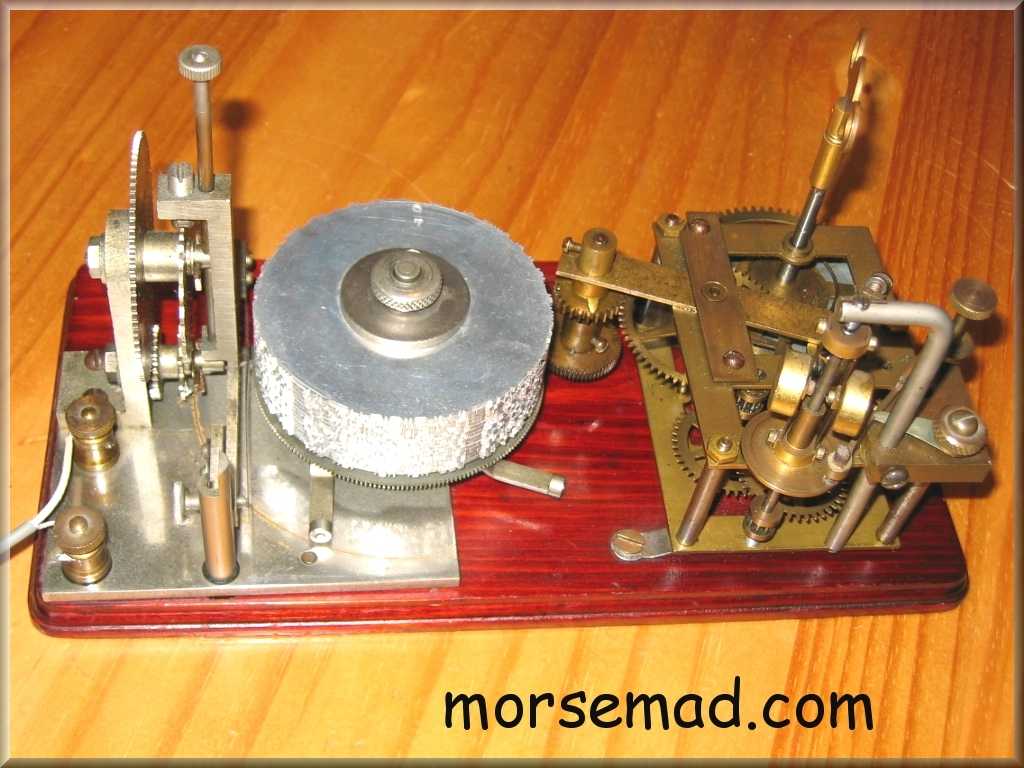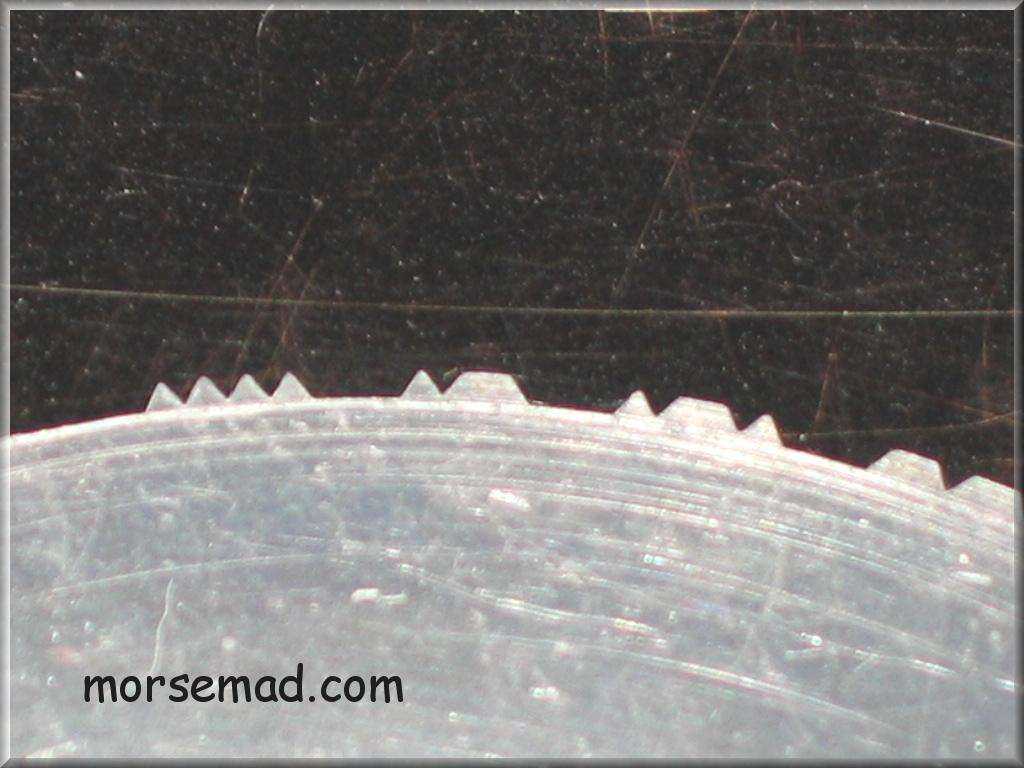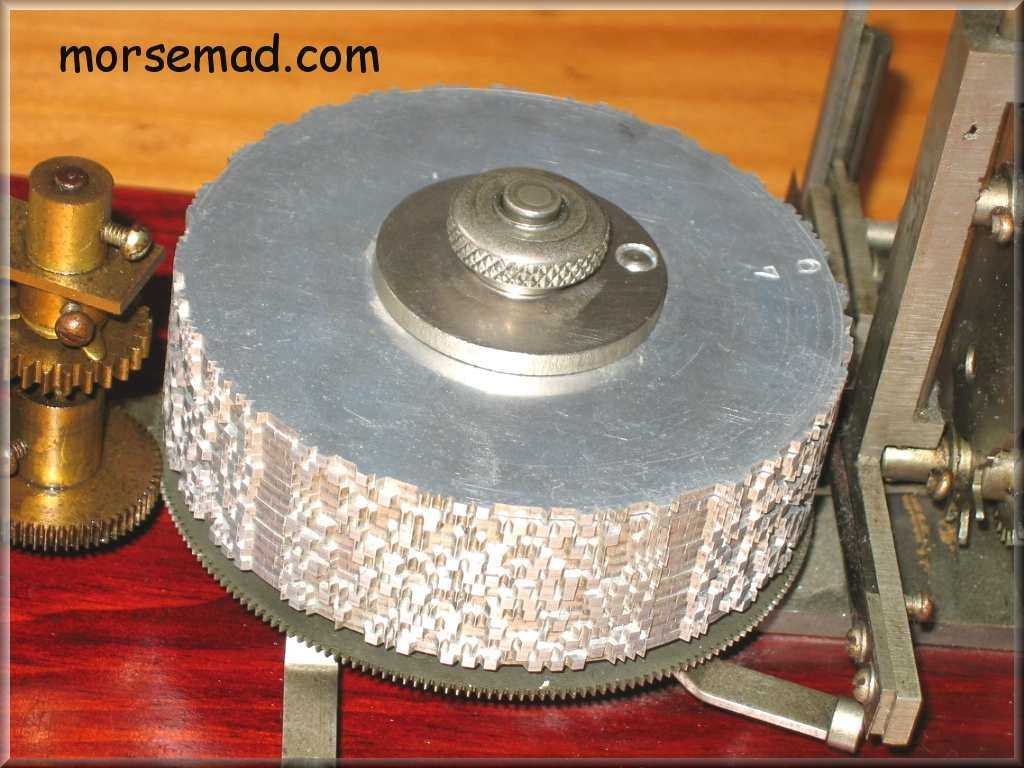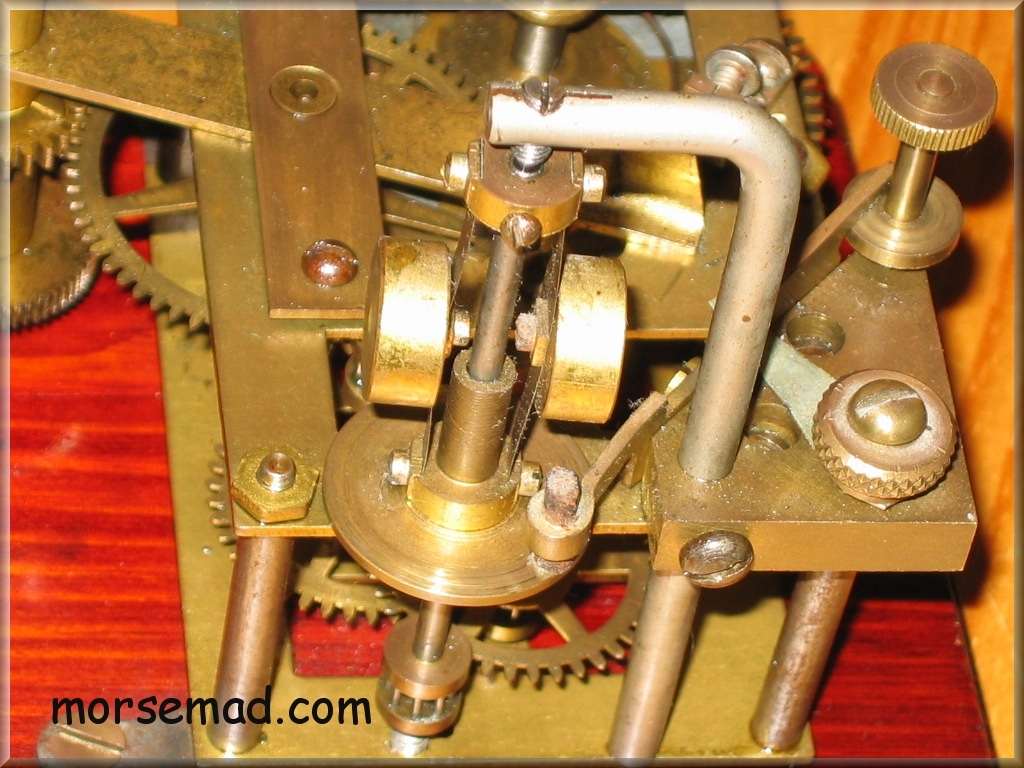The OMNIGRAPH.
Early American Clock Work Morse Code Training Set circa 1910.
 |
Patented in 1904 this wonderful instrument was invented by Charles E. Chinnock of Brooklyn, New York. It was described as "A new and useful improvement in instruments for the teaching and practice of morse code telegraphy". The model here is the top of the range Deluxe model Number ADX2777 and the original price was $14.00. There is a patent stamped into the wooden base that reads: "PATD. OCT. 25. 1904". Here is information from Tony Smith G4FAI printed in Morsum Magnificat edition 22 :
"It was a simple but ingenious concept which was, in fact, an adaptation of Samuel F.B.
Morse's very first morse code transmitter of 1837. Morse's instrument had pre-arranged saw-tooth projections, representing his morse code, which passed beneath a moveable lever, activating an on/off switch as the highs and lows of the saw-teeth passed through
the machine. The Omnigraph had similar saw-tooth projections cut around the rim of a metal disc performing exactly the same function. There are fifteen such discs rotating under the power of the clockwork motor. The coded track on each disc is divided into
five separate parts and the tracking lever automatically moves to the next disc when one fifth of the track of a disc has been signalled. It moves all the way up the pile of discs in this way and then back down again, still signalling just one fifth of the code from each disc before moving on".
|
[Above can be seen a close up of one of the disks].
"The possible variations of signal are almost infinite. Five arms projecting from underneath the discs move the tracking lever to the next disc. By retracting all five arms no move takes place and a single disc signals continuously over and over again. Leaving one arm projecting, the tracking lever follows a complete disc before moving to the next disc. Bringing more arms into use results in
a track change every time an arm passes the track-changing mechanism.
To obtain even greater variations in the code sequences, the discs can be taken off the machine, twisted round in relation to each other, or shuffled, before being put back to obtain a completely different series of signals as the machine again goes through the various track changes described above".
For learners there was a wide range of discs available, providing practice in American Morse or Continental code, including the alphabet in rotation / single letter discs / numeral / punctuation / railroad / commercial / and press systems / plus interchangeable practice messages.
|
Above is a view of all 15 disks neatly stacked ready to play.
|
Pictured here is part of the clockwork driving mechanism. Almost middle right is the start / stop control and top right can be seen the speed adjusting control. Interestingly, in a copy of a catologue circa 1919 produced by A.W.Gamage Ltd. of Holburn, London is shown a similar machine called the "Dictamorse No. 1", and priced with set of 5 Records (Discs) at 72/- ( 72 shillings).




